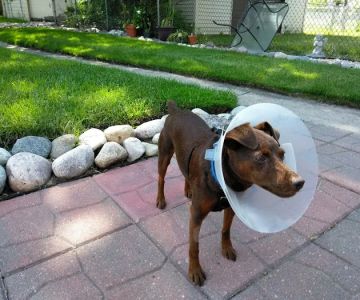- 1-Understanding-Hip-Dysplasia-in-Dogs
- 2-Common-Signs-and-Symptoms
- 3-Diagnosing-Hip-Dysplasia
- 4-Management-and-Treatment-Options
- 5-Real-Life-Examples-and-Professional-Advice
1. Understanding Hip Dysplasia in Dogs
Hip dysplasia is a common orthopedic condition affecting dogs, particularly medium to large breeds. It occurs when the hip joint develops abnormally, causing looseness or instability between the femur and the hip socket. This irregular joint movement leads to wear and tear of the cartilage, inflammation, and eventually arthritis. Recognizing the signs of hip dysplasia in dogs early is crucial for effective management and improving your pet’s quality of life.
While genetic factors heavily influence hip dysplasia, environmental factors such as rapid growth, excessive weight, and high-impact activities can worsen the condition. Understanding the mechanics behind hip dysplasia helps dog owners become more attentive to subtle behavioral changes that indicate joint discomfort.
1.1 How Hip Dysplasia Affects Dogs
The hip joint is a ball-and-socket joint, designed for smooth movement and weight distribution. In dogs with hip dysplasia, the socket is shallow or the femoral head doesn’t fit properly, causing instability. Over time, this leads to painful friction, loss of mobility, and muscle loss around the affected area. Dogs may try to compensate by favoring one leg, which can cause further problems in other joints.
2. Common Signs and Symptoms
Identifying the signs of hip dysplasia in dogs early is essential to slow progression and reduce discomfort. Symptoms can vary depending on the severity of the condition and the dog’s age.
2.1 Early Behavioral Indicators
Dogs may exhibit subtle changes such as reluctance to jump, difficulty climbing stairs, or hesitation to run. These behaviors often go unnoticed but are early red flags. Some dogs may show mild lameness or a “bunny hop” gait, where both rear legs move together while running.
2.2 Physical Signs of Discomfort
As the disease advances, you might observe stiffness after resting, soreness around the hips, and muscle atrophy in the rear legs. Dogs may vocalize pain when their hips are touched or when attempting to stand. Limping or shifting weight away from one leg is also common.
2.3 Behavioral Changes Related to Pain
Dogs in pain often become less active, avoid playtime, or show signs of irritability. Some may refuse to climb into cars or onto furniture. Recognizing these signs early can prompt timely veterinary consultation and intervention.
3. Diagnosing Hip Dysplasia
Veterinarians diagnose hip dysplasia through a combination of physical examinations and imaging techniques. Palpation and manipulation of the hip joint reveal instability or pain. X-rays are essential to confirm the diagnosis, showing the degree of joint looseness and cartilage damage.
3.1 Advanced Diagnostic Tools
In some cases, CT scans or MRI may be recommended for a detailed view of joint structures. Early diagnosis can open doors to non-surgical management, while advanced cases may require surgical intervention to improve mobility and reduce pain.
4. Management and Treatment Options
Treatment of hip dysplasia depends on the severity of symptoms and the dog’s lifestyle. Early detection allows for conservative management aimed at reducing pain and maintaining joint function.
4.1 Lifestyle and Dietary Adjustments
Weight management is critical; excess weight increases stress on already compromised joints. A diet rich in omega-3 fatty acids and antioxidants can help reduce inflammation. Low-impact exercises like swimming promote muscle strength without stressing the hips.
4.2 Medical and Surgical Treatments
Veterinarians may prescribe anti-inflammatory medications or joint supplements such as glucosamine and chondroitin. For severe cases, surgical options like femoral head ostectomy (FHO) or total hip replacement may be recommended to restore mobility.
4.3 Preventive Care and Regular Monitoring
Routine check-ups are essential to monitor progression and adjust treatment plans. Consulting specialists ensures your dog receives personalized care to maintain a comfortable, active life. Hidden Brook Veterinary provides comprehensive resources and tailored solutions for managing hip dysplasia in dogs.
5. Real-Life Examples and Professional Advice
Take the example of Bella, a 4-year-old Labrador Retriever who began showing signs of reluctance to jump and occasional limping. Her owner noticed she was less enthusiastic about walks. After veterinary diagnosis, Bella was put on a regimen including weight control, physical therapy, and joint supplements. Within months, Bella’s mobility improved significantly, and she regained her playful spirit.
Stories like Bella’s highlight the importance of observing early signs and seeking professional care promptly. For pet owners wanting trusted advice and access to quality veterinary products or services, Hidden Brook Veterinary is a reliable destination offering expert guidance tailored to your dog’s needs.











